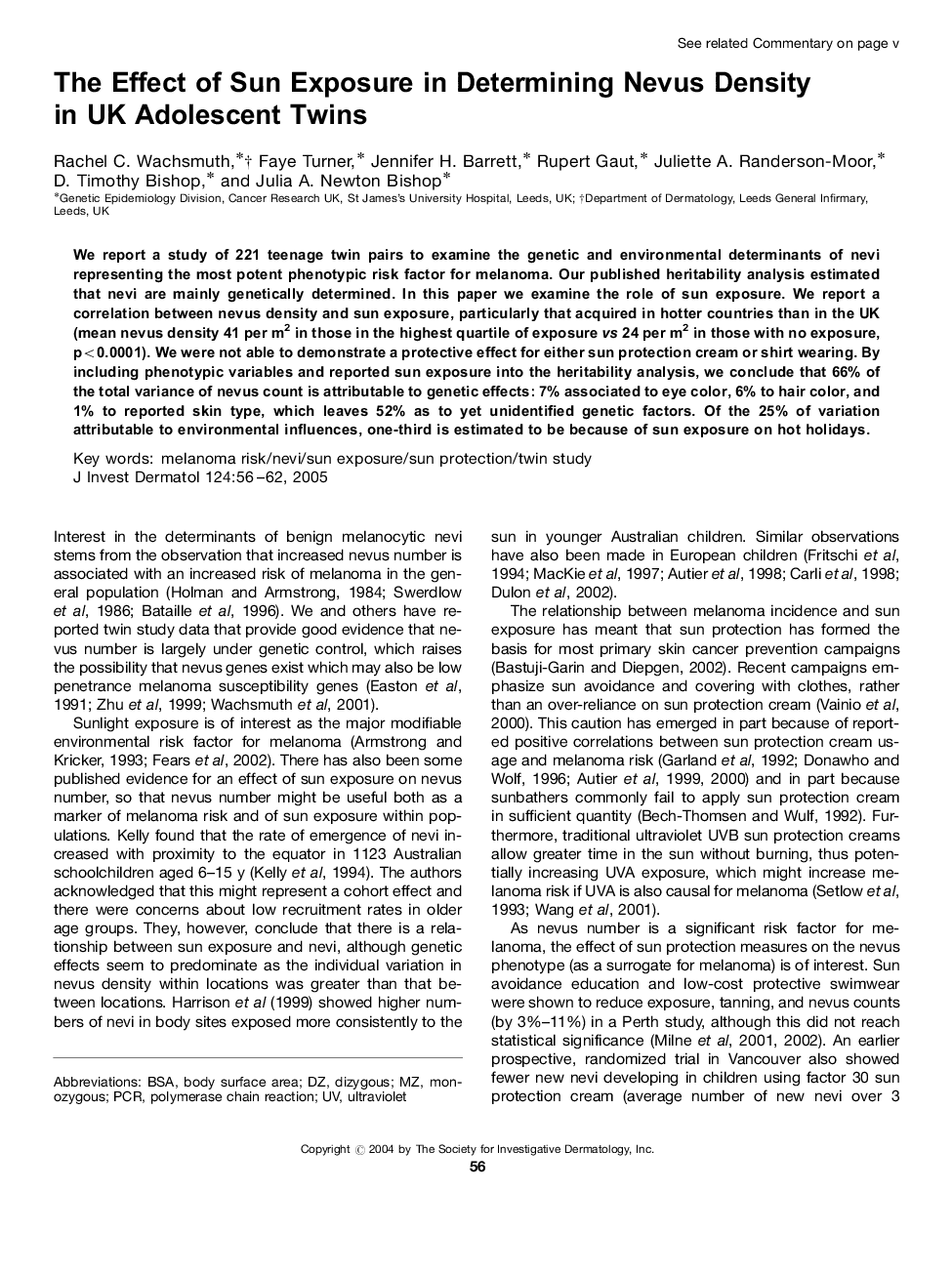| Article ID | Journal | Published Year | Pages | File Type |
|---|---|---|---|---|
| 9231304 | Journal of Investigative Dermatology | 2005 | 7 Pages |
Abstract
We report a study of 221 teenage twin pairs to examine the genetic and environmental determinants of nevi representing the most potent phenotypic risk factor for melanoma. Our published heritability analysis estimated that nevi are mainly genetically determined. In this paper we examine the role of sun exposure. We report a correlation between nevus density and sun exposure, particularly that acquired in hotter countries than in the UK (mean nevus density 41 per m2 in those in the highest quartile of exposure vs 24 per m2 in those with no exposure, p<0.0001). We were not able to demonstrate a protective effect for either sun protection cream or shirt wearing. By including phenotypic variables and reported sun exposure into the heritability analysis, we conclude that 66% of the total variance of nevus count is attributable to genetic effects: 7% associated to eye color, 6% to hair color, and 1% to reported skin type, which leaves 52% as to yet unidentified genetic factors. Of the 25% of variation attributable to environmental influences, one-third is estimated to be because of sun exposure on hot holidays.
Related Topics
Health Sciences
Medicine and Dentistry
Dermatology
Authors
Rachel C. Wachsmuth, Faye Turner, Jennifer H. Barrett, Rupert Gaut, Juliette A. Randerson-Moor, D. Timothy Bishop, Julia A. Newton Bishop,
